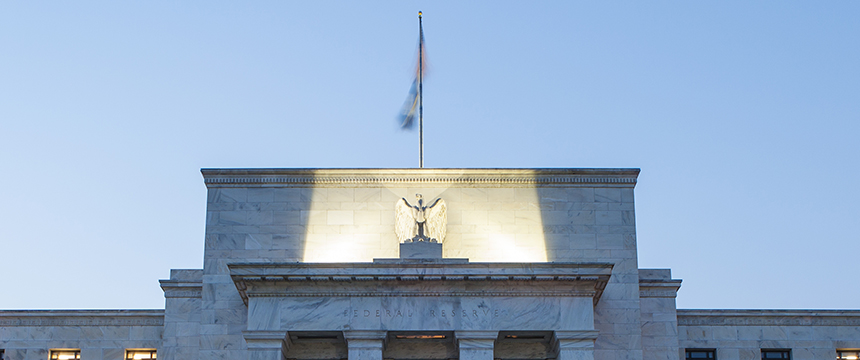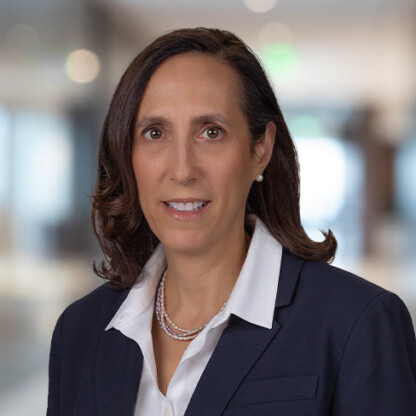CARES Act – Federal Reserve Main Street Loan Facilities – Updated June 12, 2020

The Main Street Lending Program, authorized under the CARES Act and Section 13(3) of the Federal Reserve Act, is designed to provide financial assistance to small and medium sized businesses. There will be three Main Street loan facilities available: the Main Street New Loan Facility, the Main Street Expanded Loan Facility and the Main Street Priority Loan Facility (all such facilities being the “Main Street Loan Facilities”). Main Street Loan program details were initially announced on April 9, and on April 30, 2020, May 27, 2020 and June 8, 2020, the Fed released updated FAQs along with a number of additional documents related to the program. The Federal Reserve has yet to announce the first day they will accept program documents, but on June 15, 2020, the Federal Reserve Bank of Boston announced the opening of the Lender Registration portal. The updated terms and conditions of each Main Street Loan Facility, as of June 8, 2020, are set forth below; however, the Federal Reserve may issue additional program rules and guidance. Participants are responsible for keeping up to date on this information in order to comply with the requirements of the Main Street Loan Facilities.
Eligible Lenders
Eligible Lenders must generally be U.S. federally-insured depository institutions, which include banks, savings associations, credit unions and U.S branches or agencies of foreign banks, U.S. bank holding companies, U.S. savings and loan holding companies, U.S. intermediate holding companies of foreign banking organization, and subsidiaries of any of the foregoing. Non-bank lenders are not currently eligible but the Federal Reserve affirmed in the FAQs that it is considering expanding the list of Eligible Lenders in the future. Eligible Lenders are required to make certain certifications and agree to certain covenants in connection with each Eligible Loan (see below) that it originates under the Main Street Loan Facilities, including that:
- It will not request that an Eligible Borrower (see below) repay debt extended by the Eligible Lender to the Eligible Borrower or pay interest on such outstanding obligations (other than mandatory and due principal or interest payments) until (i) the Eligible Loan or the upsized tranche of the Eligible Loan is repaid in full (exceptions for mandatory payments and payments pursuant to a default and acceleration), or (ii) neither the SPV nor any governmental assignee holds any interest in the Eligible Loan; provided, that, under the Main Street Priority Loan Facility, an Eligible Borrower may, at the time of origination of such Main Street Priority Loan, refinance existing debt that is owed to a lender other than the Eligible Lender making such Main Street Priority Loan.
- It will not cancel or reduce any existing committed lines of credit to the Eligible Borrower, unless an event of default has occurred thereunder until (i) the Eligible Loan or the upsized tranche of the Eligible Loan is repaid in full (exceptions for mandatory payments and payments pursuant to a default and acceleration), or (ii) neither the SPV nor any governmental assignee holds any interest in the Eligible Loan.
- The methodology used for calculating the Eligible Borrower’s adjusted 2019 EBITDA to determine the maximum loan size of the Eligible Loan is the same methodology previously used for adjusting EBITDA when extending credit to such Eligible Borrower or similarly situated borrowers on or before April 24, 2020.
- It is eligible to participate in the Main Street Loan Facilities, including in light of the conflicts of interest prohibition in section 4019(b) of the CARES Act.
- If Borrower has an outstanding loan with the Eligible Lender as of December 31, 2019, such loan has an internal risk-rating equivalent to a “pass” in the Federal Financial Institutions Examination Council’s supervisory rating system on that date.
Eligible Borrowers
An Eligible Borrower is a business entity organized for profit as a partnership, an LLC, a corporation, an association, a cooperative, a joint venture or a tribal business concern that:
- Was established prior to March 13, 2020.
- Is not an Ineligible Businesses listed in 13 CFR 120.110(b)-(j) and (m)-(s), as modified by the regulations implementing the Paycheck Protection Program1 (including the rule prohibiting hedge funds and private equity firms from participating, while noting that their portfolio companies may still qualify).
- Either (i) has 15,000 employees or fewer, or (ii) had 2019 annual revenues of $5.0 billion or less. Borrowers will be required to include the revenue and the employees of their affiliates as required in 13 CFR 121.106 (same rules as the Paycheck Protection Program).
- Is created or organized in the United States or under the laws of the United States with significant operations, and a majority of its employees based, in the United States. The determination as to whether a borrower has significant operations and the majority of employees in the United States will be evaluated together with the borrower’s subsidiaries.
- Has the ability to make Required Borrower Certifications and Covenants (see below).
- Has not received specific support pursuant to Subtitle A of Title IV of the CARES Act (for example, under the Primary Market Corporate Credit Facility).
- It or its affiliates has not received a loan under more than one of the three Main Street Loan Facilities (this restriction does not preclude participation in the Paycheck Protection Program and a Main Street Loan Facility).
Nonprofit organizations are not currently Eligible Borrowers; however, the Federal Reserve is currently working to establish one or more loan options for non-profits. Additionally, the Federal Reserve may consider other forms of organization for eligibility in the program in the future.
An Eligible Borrower is required to make certain certifications and covenants in connection with an Eligible Loan (see below) under the Main Street Loan Facilities, including that:
- It is unable to secure adequate credit accommodations from other banking institutions, which criterion the FAQs state may be satisfied by a borrower certification that the amount, price or terms of credit available from other sources are inadequate for the Eligible Borrower’s needs during the current unusual and exigent circumstances.
- It will refrain from repaying the principal balance of, or paying any interest on, any other debt (other than mandatory and due principal or interest payments) until (i) the Eligible Loan or the upsized tranche is repaid in full (exceptions for mandatory payments and payments pursuant to a default and acceleration), or (ii) neither the SPV nor any governmental assignee holds any interest in the Eligible Loan; provided, that, under the Main Street Priority Loan Facility, an Eligible Borrower may, at the time of origination of the Eligible Loan, refinance existing debt that it owes to a lender other than the Eligible Lender making such Priority Loan.
- Prepayments triggered by the incurrence of new debt can only be paid if such prepayments are de minimis.
- Safe Harbors: Eligible Borrowers may
- Repay a line of credit (credit cards) in the normal course;
- Take on and pay additional debt obligations in the normal course, including inventory and equipment financing, provided that such debt is secured only by the new property;
- Refinance debt that matures no later than 90 days after the date of such refinancing.
- Safe Harbors: Eligible Borrowers may
- It will not seek to cancel or reduce any of its committed lines of credit until (i) the Eligible Loan or the upsized tranche of the Eligible Loan is repaid in full (exceptions for mandatory payments and payments pursuant to a default and acceleration), or (ii) neither the SPV nor any governmental assignee holds any interest in the Eligible Loan.
- It has a reasonable basis to believe that, as of the date of origination of the Eligible Loan and after giving effect to such loan, it has the ability to meet its financial obligations for at least the next 90 days and does not expect to file for bankruptcy during that time period.
- It is not insolvent.
- Under Section 13(3) of the Federal Reserve Act, an entity is insolvent if, among other things, it is in a bankruptcy or other insolvency proceeding or it is generally failing to pay undisputed debts as they became due during the 90 days preceding the date of borrowing, but the form of Borrower certifications and covenants agreement include a carve out for failure to pay debts as a result of COVID-19 related disruptions.
- Under Section 13(3) of the Federal Reserve Act, an entity is insolvent if, among other things, it is in a bankruptcy or other insolvency proceeding or it is generally failing to pay undisputed debts as they became due during the 90 days preceding the date of borrowing, but the form of Borrower certifications and covenants agreement include a carve out for failure to pay debts as a result of COVID-19 related disruptions.
- It will follow the compensation, stock repurchase, and capital distribution restrictions that apply to direct loan programs under section 4003(c)(3)(A)(ii) of the CARES Act, except that an S corporation or tax pass-through entity that is an Eligible Borrower may make distributions to the extent reasonably required to cover its owners’ tax obligations in respect of the entity’s earnings.
- It is eligible to participate in the loan program, including the conflicts of interest prohibition in section 4019(b) of the CARES Act.
- It will make commercially reasonable efforts to maintain its payroll and retain its employees during the time that the Eligible Loan is outstanding.
Eligible Loans
General Terms
- 5-year maturity.
- Interest is deferred for one year (unpaid interest is capitalized).
- Principal amortization of 15%, 15% and 70% at the end of the third year, fourth year and fifth year, respectively.
- No prepayment penalty.
- Adjustable rate of LIBOR (1 or 3 month) + 3.0%. No prescribed fall back index.
- Fees:
- Transaction Fee: Eligible Lender will pay the SPV 1% (New and Priority) or 0.75% (Expanded) of the principal amount of the Eligible Loan at the time of origination. The Eligible Lender may require the Eligible Borrower to pay this fee.
- Origination Fee: An Eligible Borrower will pay an Eligible Lender an origination fee of up to 1% (New and Priority) or 0.75% (Expanded) of the principal amount of the Eligible Loan at the time of origination. The Lender has discretion over whether and when to charge this fee to the Borrower.
- Servicing Fee: The SPV will pay an Eligible Lender a servicing fee of 0.25% of the principal amount of its participation in the Eligible Loan per annum for loan servicing.
- No other fees may be charged by Eligible Lenders except for de minimis fees that are customary and necessary in the underwriting of commercial and industrial loans to similar borrowers, such as appraisal and legal fees, and customary consent fees in the context of upsizing a loan under the Main Street Expanded Loan Facility.
Main Street New Loan Facility
Under this program, the Federal Reserve will purchase a 95% participation in a secured or unsecured term Eligible Loan originated on or after April 24, 2020, so long as the loan has all of the following features:
- Minimum loan size of $250,000.
- Maximum loan size that is the lesser of (i) $35 million and (ii) an amount, that when added to the Eligible Borrower’s existing outstanding and undrawn available debt, does not exceed four times the Eligible Borrower’s 2019 adjusted EBITDA. If one or more affiliates of an Eligible Borrower is also applying for or has received a Main Street New Loan, debt and EBITDA are measured both individually and for the entire affiliate group.
- Is not, at the time of origination or at any time during the term of the loan, contractually subordinated in terms of priority to any of the Eligible Borrower’s other loans or debt instruments. B.3 of the FAQ further explains that a Main Street New Loan cannot be junior in priority in bankruptcy to the Eligible Borrower’s other unsecured loans or debt instruments.
Main Street Priority Loan Facility
Under this program, the Federal Reserve will purchase a 95% participation in a secured or unsecured term Eligible Loan originated on or after April 24, 2020, so long as the loan has all of the following features:
- Minimum loan size of $250,000.
- Maximum loan size that is the lesser of (i) $50 million and (ii) an amount, that when added to the Eligible Borrower’s existing outstanding and undrawn available debt, does not exceed six times the Eligible Borrower’s 2019 adjusted EBITDA. If one or more affiliates of an Eligible Borrower is also applying for or has received a Main Street Priority Loan, debt and EBITDA are measured both individually and for the entire affiliate group.
- At the time of origination and at all times during the term of the Eligible Loan, the Eligible Loan must be senior to, or pari passu with, in terms of priority and security, the Eligible Borrower’s other loan or debt instruments (other than Mortgage Debt (which includes debt secured by real estate and limited recourse equipment financings secured only by the acquired equipment)).
- If secured, the loan cannot at the time of origination or at any time during the term of the loan, be contractually subordinated in terms of priority to any of the Eligible Borrower’s other loans or debt instruments (other than Mortgage Debt).
- If secured, at the time of origination, the loan must have a Collateral Coverage Ratio (as defined in C.5 of the FAQ) of:
- At least 200%; or
- Not less than the aggregate Collateral Coverage Ratio for all of the Borrower’s other secured loans or debt instruments (other than Mortgage Debt).
Main Street Expanded Loan Facility
Under this program, the Federal Reserve will purchase a 95% participation in an upsized tranche of a secured or unsecured term loan or revolving credit facility, which existing loan was originated on or before April 24, 2020, and has a remaining maturity of at least 18 months (taking into account any adjustments made to the maturity of the loan after April 24, 2020, including at the time of upsizing) so long as the upsized tranche of the loan is a term loan and has all of the following features:
- Minimum loan size of $10 million.
- Maximum loan size that is the lesser of (i) $300 million or (ii) an amount, that when added to the Eligible Borrower’s existing outstanding and undrawn available debt, does not exceed six times the Eligible Borrower’s adjusted 2019 EBITDA. If one or more affiliates of an Eligible Borrower is also applying for a Main Street Expanded Loan, debt and EBITDA are counted both individually and together with all affiliates.
- At the time of upsizing and at all times the upsized tranche is outstanding, the upsized tranche is senior to or pari passu with, in terms of priority and security, the Eligible Borrower’s other loans or debt instruments (other than mortgage debt).
Restrictions
- Until 12 months after the date on which the Eligible Loan is no longer outstanding, Eligible Borrower may not (i) make any stock buybacks of equity securities listed on a national securities exchange of Eligible Borrower or parent (exceptions for contractual obligations entered in to prior to March 27, 2020), or (ii) pay dividends or make capital distributions with respect to the common stock (or equivalent) of the Eligible Borrower, except that an S corporation or other tax pass-through entity may make distributions to the extent reasonably required to cover its owner’s tax obligations in respect of the entity’s earnings.
- Until 12 months after the date on which the Eligible Loan is no longer outstanding, Eligible Borrower must agree to certain restrictions on employee and officer compensation in excess of $425,000.
Certain Borrower Practical Considerations
- Borrowers will need to determine their eligibility for the Main Street Loan Facilities and decide whether to participate in one of the three Main Street Loan Facilities or, if eligible, the Primary Market Corporate Credit Facility. This determination must take into consideration affiliation rules, which impact not only whether a particular borrower is eligible for a Main Street Loan Facility, but also which Main Street Loan Facility is selected (since affiliates in an affiliate group may only choose one Main Street Loan Facility) and the maximum loan size available to a borrower.
- Borrowers should review their existing agreements and contractual commitments for limitations on additional borrowings, liens and other provisions that could be triggered by a loan pursuant to the Main Street Loan Facilities, and determine whether consents, amendments or waivers will be required from existing lender(s) or counterparties.
- Borrowers should review their assets and identify available collateral to determine if it is sufficient to meet the Collateral Coverage Ratio under the Main Street Priority Loan Facility.
- Borrowers interested in the Main Street Loan Facilities should contact their lender now to ensure funds are disbursed soon after the Facilities are operational.
Due to the evolving nature of the Main Street Loan Facilities and the indication by the Federal Reserve that the Treasury and Federal Reserve may make adjustments to the terms and conditions of the Main Street Loan Facilities and that they will continue to seek input from lenders, borrowers, and other stakeholders, please keep your Foley contact apprised of any steps that you take so we are best positioned to assist once the Treasury and Federal Reserve release further guidance.
Foley has created a multi-disciplinary and multi-jurisdictional team, which has prepared a wealth of topical client resources and is prepared to help our clients meet the legal and business challenges that the coronavirus outbreak is creating for stakeholders across a range of industries. Click here for Foley’s Coronavirus Resource Center to stay apprised of relevant developments, insights and resources to support your business during this challenging time. To receive this content directly in your inbox, click here and submit the form.
—————————————————–
1 https://www.federalregister.gov/documents/2020/04/15/2020-07672/business-loan-program-temporary-changes-paycheck-protection-program; https://www.federalregister.gov/documents/2020/04/20/2020-08257/business-loan-program-temporary-changes-paycheck-protection-program-additional-eligibility-criteria</a>; https://www.federalregister.gov/documents/2020/04/28/2020-09098/business-loan-program-temporary-changes-paycheck-protection-program-requirements-promissory-notes



